Autologous platelet-rich plasma for assisted reproduction
- PMID: 38682756
- PMCID: PMC11057220
- DOI: 10.1002/14651858.CD013875.pub2
Autologous platelet-rich plasma for assisted reproduction
Abstract
Background: Autologous platelet-rich plasma (PRP) consists of plasma and a concentrate of platelets extracted from fresh whole blood of the person being treated. Research has suggested that intrauterine or intraovarian infusion/injection of PRP before embryo transfer may improve endometrial receptivity and response to ovarian stimulation in women undergoing assisted reproduction. We compared these interventions to standard treatment, placebo, or other interventions (mechanical or pharmacological).
Objectives: To assess the effectiveness and safety of intrauterine and intraovarian infusion/injection of platelet-rich plasma in infertile women undergoing assisted reproductive technology cycles.
Search methods: We searched the Cochrane Gynaecology and Fertility Group's Specialised Register, CENTRAL, MEDLINE, Embase, and the Epistemonikos database in January 2023. We also searched the reference lists of relevant articles and contacted the trial authors and experts in the field for any additional trials.
Selection criteria: We included randomized controlled trials (RCTs) that evaluated the application of PRP in the uterine cavity, ovaries, or both versus no intervention, placebo, or any other intervention (either mechanical or pharmacological) in women undergoing in vitro fertilization (IVF) or intracytoplasmic sperm injection (ICSI) cycles.
Data collection and analysis: We followed standard methodological procedures recommended by Cochrane, including use of the updated risk of bias tool (RoB 2). The primary outcomes were live birth (or ongoing pregnancy) and miscarriage. The secondary outcomes were clinical pregnancy, complications of the procedure, multiple pregnancy, ectopic pregnancy, fetal growth restriction, preterm delivery, and fetal abnormality. We estimated the average effect of the interventions by fitting a Der Simonian-Laird's random-effects meta-analysis model. We reported pooled odds ratios (ORs) with 95% confidence intervals (CIs). We restricted the primary analyses to trials at low risk of bias for the outcomes and performed sensitivity analyses that included all studies.
Main results: We included 12 parallel-group RCTs that recruited a total of 1069 women. We identified three different comparison groups. Using GRADE, we assessed the certainty of evidence as very low for almost all outcomes. Intrauterine injection/infusion of platelet-rich plasma versus no intervention or placebo Nine studies evaluated intrauterine PRP versus no intervention or placebo. Eight included women with at least two or three previous implantation failures. Only one was assessed at low risk of bias for each outcome. This study provided very low-certainty evidence about the effect of intrauterine PRP injection versus no intervention on live birth (OR 1.10, 95% CI 0.38 to 3.14; 94 women) and miscarriage (OR 0.96, 95% CI 0.13 to 7.09; 94 women). If the likelihood of live birth following no intervention is assumed to be 17%, then the likelihood following intrauterine PRP would be 7% to 40%; and if the risk of miscarriage following no intervention is 4%, then the risk following intrauterine PRP would be 1% to 24%. When we analyzed all studies (regardless of risk of bias), we found very low-certainty evidence about the effect of intrauterine PRP compared with placebo or no intervention on live birth or ongoing pregnancy (OR 2.38, 95% CI 1.16 to 4.86; I² = 54%; 6 studies, 564 women) and miscarriage (OR 1.54, 95% CI 0.59 to 4.01; I² = 0%; 5 studies, 504 women). The study at low risk of bias provided very low-certainty evidence about the effect of intrauterine PRP compared with no intervention on clinical pregnancy (OR 1.55, 95% CI 0.64 to 3.76; 94 women) and ectopic pregnancy (OR 2.94, 95% CI 0.12 to 73.95; 94 women). The synthesis of all studies provided very low-certainty evidence about the effect of intrauterine PRP compared with placebo or no intervention on clinical pregnancy (OR 2.22, 95% CI 1.50 to 3.27; I² = 24%; 9 studies, 824 women), multiple pregnancy (OR 2.68, 95% CI 0.81 to 8.88; I² = 0%; 2 studies, 240 women), and ectopic pregnancy (OR 2.94, 95% CI 0.12 to 73.95; 1 study, 94 women; very low-certainty evidence). Intrauterine infusion of PRP may increase the risk of preterm delivery compared with no intervention (OR 8.02, 95% CI 1.72 to 37.33; 1 study, 120 women; low-certainty evidence). No studies reported pain, infection, allergic reaction, fetal growth restriction, or fetal abnormality. Intrauterine infusion of platelet-rich plasma versus intrauterine infusion of granulocyte colony-stimulating factor Two RCTs evaluated intrauterine PRP versus intrauterine granulocyte colony-stimulating factor (G-CSF); both included women with thin endometrium, and neither was judged at low risk of bias for any outcome. We are uncertain about the effect of intrauterine PRP compared with intrauterine G-CSF on live birth (OR 0.88, 95% CI 0.43 to 1.81; 1 study, 132 women; very low-certainty evidence), miscarriage (OR 1.94, 95% CI 0.63 to 5.96; 1 study, 132 women; very low-certainty evidence), and clinical pregnancy (OR 1.24, 95% CI 0.66 to 2.35; 2 studies, 172 women; very low-certainty evidence). Neither study reported adverse outcomes other than miscarriage. Intraovarian injection of platelet-rich plasma versus no intervention One RCT evaluated PRP injection into both ovaries versus no intervention; it was judged at high risk of bias for the two outcomes it reported. We are uncertain about the effect of intraovarian PRP injection compared with no intervention on ongoing pregnancy (OR 1.09, 95% CI 0.33 to 3.63; 73 women; very low-certainty evidence) and clinical pregnancy (OR 0.90, 95% CI 0.31 to 2.60; 73 women; very low-certainty evidence). The study examined no safety outcomes.
Authors' conclusions: We are uncertain about the effect of intrauterine or intraovarian administration of PRP on outcomes of assisted reproduction technology in infertile women. The pooled results should be interpreted with caution. Only one of the 12 included studies was judged at low risk of bias. Other limitations of the included trials were failure to report live birth, poor reporting of methods, lack of prospective protocol registration, low precision due to the small number of enrolled participants, indirectness due to the specific subpopulations and settings studied, and insufficient or absent safety data.
Copyright © 2024 The Cochrane Collaboration. Published by John Wiley & Sons, Ltd.
Conflict of interest statement
MP has received grants from the World Health Organization (WHO Reg. Nos. 2021/1110248 & 2022/1270903‐0) outside the submitted work. DV and CSS have no conflicts of interest to disclose.
Figures
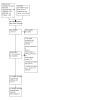


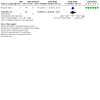
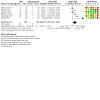
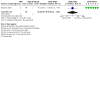
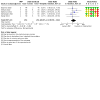
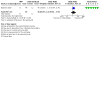
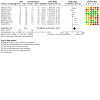
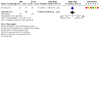
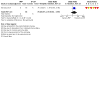

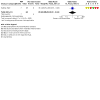
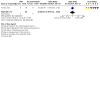
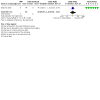
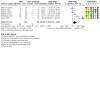
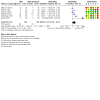
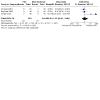
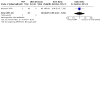
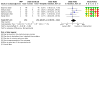
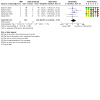
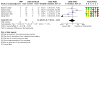
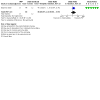
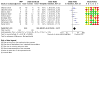
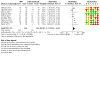
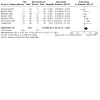
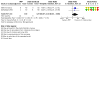
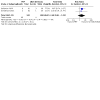
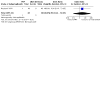
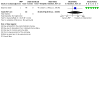
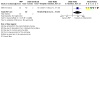
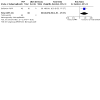
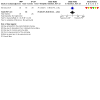
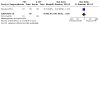
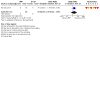
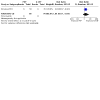
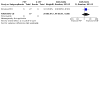
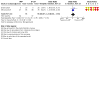
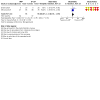
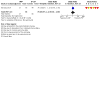
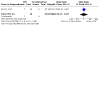
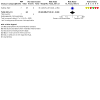
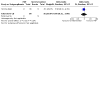
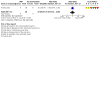
Update of
References
References to studies included in this review
Alhalabi 2019 {published data only}
-
- Alhalabi M, Alsamawi S, Deroubi H, Taha A, Doghouz R, Alkhatib A. Autologous intrauterine platelet-rich plasma instillation for recurrent implantation failure: a pilot study. Human Reproduction 2019;34:i334-5.
Allahveisi 2020 {published data only}
Bakhsh 2022 {published data only}
Baybordi 2022 {published data only}
-
- IRCT2017061434525N. Effect of autologous platelet-rich plasma on improving pregnancy outcomes in repeated implantation failure: a randomized controlled trial. trialsearch.who.int/Trial2.aspx?TrialID=IRCT2017061434525N1 (first received 7 October 2017).
Ershadi 2022 {published data only}
-
- Ershadi S, Noori N, Dashipoor A, Ghasemi M, Shamsa N. Evaluation of the effect of intrauterine injection of platelet-rich plasma on the pregnancy rate of patients with a history of implantation failure in the in vitro fertilization cycle. Journal of Family Medicine and Primary Care 2022;11(5):2162-6. - PMC - PubMed
Godha 2019 {published data only}
-
- Godha Z, Nayar KD, Gupta S, Singh S, Gupta M, Kant G, et al. Randomized controlled trial of intrauterine infusion of autologous platelet rich plasma (PRP) versus granulocyte colony stimulating factor (G-CSF) in thin endometrium in frozen embryo transfer. Human Reproduction 2019;34(Suppl 1):i277.
Herlihy 2022 {published data only}
-
- Herlihy N, Cakiroglu Y, Whitehead CV, Klimczak AM, Scott RT, Tiras B, Seli E. The effect of intra-ovarian injection of platelet rich plasma on in vitro fertilization outcomes in young women with poor ovarian response: results from the PROVA (PRP for ovarian activation) trial. Fertility and Sterility 2022;118(4):e320.
Obidniak 2017 {published data only}
-
- Obidniak D, Gzgzyan A, Feoktistov A, Niauri D. Randomized controlled trial evaluating efficacy of autologous platelet-rich plasma therapy for patients with recurrent implantation failure. Fertility and Sterility 2017;108(3):e370.
Safdarian 2022 {published data only}
-
- Safdarian L, Aleyasin A, Aghahoseini M, Lak P, Mosa SH, Sarvi F, et al. Efficacy of the intrauterine infusion of platelet-rich plasma on pregnancy outcomes in patients with repeated implantation failure: a randomized control trial. International Journal of Women's Health and Reproduction Sciences 2022;10(1):38-44.
Selvaraj 2019 {published data only}
-
- Selvaraj P, Selvaraj K, Chandrasekar H, Sairam L. Comparing the effectiveness of intrauterine infusion of platelet-rich plasma and granulocyte-colony-stimulating factor in frozen embryo transfer cycles. The Onco Fertility Journal 2019;2(2):62.
Zamaniyan 2021 {published data only}
-
- IRCT20160815029374N. Effect of PRP on pregnancy. trialsearch.who.int/Trial2.aspx?TrialID=IRCT20160815029374N2 (first received 16 January 2018).
-
- IRCT20160815029374N. PRP in infertility. trialsearch.who.int/Trial2.aspx?TrialID=IRCT20160815029374N5 (first received 11 May 2019).
-
- Zamaniyan M, Peyvandi S, Heidaryan Gorji H, Moradi S, Jamal J, Aghmashhadi FYP, et al. Effect of platelet-rich plasma on pregnancy outcomes in infertile women with recurrent implantation failure: a randomized controlled trial. Gynecological Endocrinology 2021;37(2):141-5. - PubMed
Zargar 2021 {published data only}
-
- IRCT20180102038182N. Platelet derived growth factor and IVF Failure. trialsearch.who.int/Trial2.aspx?TrialID=IRCT20180102038182N1 (first received 21 January 2018).
-
- Zargar M, Pazhouhanfar R, Najafian M, Choghakabodi PM. Effects of intrauterine autologous platelet-rich plasma infusions on outcomes in women with repetitive in vitro fertilization failures: A prospective randomized study. Clinical and Experimental Obstetrics and Gynecology 2021;48(1):180-5.
References to studies excluded from this review
Abduljabbar 2022 {published data only}
Aflatoonian 2021 {published data only}
-
- Aflatoonian A, Lotfi M, Saeed L, Tabibnejad N. Effects of intraovarian injection of autologous platelet-rich plasma on ovarian rejuvenation in poor responders and women with primary ovarian insufficiency. Reproductive Sciences 2021;28(7):2050-9. - PubMed
Aghajanzadeh 2020 {published data only}
-
- IRCT20180417039338N. Effect of platelet-rich plasma (PRP)on fertility in women. trialsearch.who.int/Trial2.aspx?TrialID=IRCT20180417039338N2 (18 June 2018).
Bach 2021 {published data only}
-
- Bach HA, Vuong VVH, Bach TTC, Nguyen QH, Pham VP, Nguyen TN. Uterine infusion of autologous platelet rich plasma (PRP) before embryo transfer may improve the transfer outcomes in recurrent implantation failure and thin/scarred endometrium patients. Human Reproduction 2021;36:i330-1.
Barad 2020 {published data only}
-
- Barad DH, Albertini DF, Gleicher N. Endocrine effects of intraovarian injection of platelet-rich plasma (PRP) in women with premature ovarian aging. Fertility and Sterility 2020;114(3):e89.
Barad 2021a {published data only}
-
- Barad DH, Benor A, Molinari E, Patrizio P, Gleicher N. A pilot study of oocyte production and endocrine response after intraovarian treatment with platelet-rich plasma (PRP) in infertile women of very advanced age. Fertility and Sterility 2021;116(3):e242.
Barad 2021b {published data only}
-
- Barad D, Darmon SK, Benor A, Gleicher N. Ovarian function following intraovarian injection of autologous platelet rich plasma (APRP) in women with low functional ovarian reserve. Human Reproduction 2021;36:i410.
Cakiroglu 2019a {published data only}
-
- Cakiroglu Y, Saltik A, Yuceturk A, Karaosmanoglu O, Tayyar AT, Scott RT, et al. In women with poor ovarian response, intraovarian injection of autologous platelet rich plasma improves ovarian reserve and IVF outcome parameters. Fertility and Sterility 2019;112(3):e225.
Cakiroglu 2019b {published data only}
-
- Cakiroglu Y, Saltik A, Yuceturk A, Karaosmanoglu O, Tayyar AT, Scott RT, et al. Effects of intraovarian injection of autologous platelet rich plasma on ovarian reserve and IVF outcomes in women with premature ovarian insufficiency. Fertility and Sterility 2019;112(3):e72.
Cakiroglu 2020a {published data only}
-
- Cakiroglu Y, Saltik A, Yuceturk A, Karaosmanoglu O, Kopuk SY, Scott RT, et al. Ovarian reserve parameters and IVF outcomes in 510 women with poor ovarian response (POR) treated with intraovarian injection of autologous platelet rich plasma (PRP). Fertility and Sterility 2020;114(3):e458. - PMC - PubMed
Cakiroglu 2020b {published data only}
-
- Cakiroglu Y, Saltik A, Yuceturk A, Karaosmanoglu O, Kopuk SY, Scott RT, et al. Follicular activation by intraovarian injection of autologous platelet rich plasma (PRP) in women with primary ovarian insufficiency (POI): impact on ovarian reserve and IVF outcome. Fertility and Sterility 2020;114(3):e158. - PMC - PubMed
Cakiroglu 2021a {published data only}
-
- Cakiroglu Y, Tohma YA, Yuceturk A, Karaosmanoglu O, Kopuk SY, Utkan Korun ZE, et al. Effects of subendometrial autologous platelet rich plasma injection on endometrium and pregnancy rates in patients with unresponsive thin endometrium undergoing frozen-thawed embryo transfer. Fertility and Sterility 2021;116(3):e103. - PMC - PubMed
Cakiroglu 2021b {published data only}
Cakiroglu 2022a {published data only}
Cakiroglu 2022b {published data only}
Chang 2017 {published data only}
-
- Chang Y, Li J, Li X, Yang X, Liang X. Platelet-rich plasma administration has benefit for infertile women with thin endometrium in frozen blastocyst-stage embryos transfer program. Fertility and Sterility 2017;108(3):e77.
Chang 2019 {published data only}
ChiCTR2000033023 {unpublished data only}
-
- ChiCTR2000033023. The effect of platelet rich plasma (PRP) intrauterine infusion on the outcome of IVF-ET in patients with thin endometrium and repeated implantation failure: a prospective, randomized, single center parallel controlled trial. trialsearch.who.int/Trial2.aspx?TrialID=ChiCTR2000033023 (first received 18 May 2020).
CTRI/2022/05/042399 {unpublished data only}
-
- CTRI/2022/05/042399. Role of platelet rich plasma in infertile females with thin endometrium. trialsearch.who.int/Trial2.aspx?TrialID=CTRI/2022/05/042399 (first received 6 May 2022).
Dogra 2020 {published data only}
Dogra 2022 {published data only}
-
- Dogra Y, Singh N, Vanamail P. Autologous platelet-rich plasma optimizes endometrial thickness and pregnancy outcomes in women with refractory thin endometrium of varied aetiology during fresh and frozen-thawed embryo transfer cycles. Jornal Brasileiro de Reproducao Assistida 2022;26(1):13-21. - PMC - PubMed
Dzhincharadze 2021 {published data only}
-
- Dzhincharadze LG, Abubakirov AN, Mishieva NG, Bakuridze EM, Bystrykh OA. Effectiveness of intrauterine administration of autologous platelet-rich plasma to prepare 'thin' endometrium for the defrosted embryo transfer program. Akusherstvo i ginekologiya (Russian Federation) 2021;2:90-5.
Dzhincharadze 2022 {published data only}
-
- Dzhincharadze L, Abubakirov A, Martazanova B, Korolkova A, Mikhaylova N, Fedorova T, et al. Granulocyte colony-stimulating factor and platelet-rich plasma improve pregnancy outcomes in patients with thin endometrium and recurrent implantation failure (RIF) in frozen embryo transfer cycles (FET). Human Reproduction 2022;37:i359-60.
Efendieva 2020 {published data only}
-
- Efendieva ZN, Apolikhina IA, Kalinina EA, Fyodorova TA, Belousov DM, Fathudinov TK. Autologous platelet-rich plasma injection into the endometrium in patients with uterine factor infertility. Fertility and Sterility 2020;114(3):e166.
Feskov 2020 {published data only}
-
- Feskov O, Zhylkova Y, Feskova A, Blazhko O, Yegunkova O. Clinical applications of platelet-rich plasma in poor endometrium patients in IVF practice. Human Reproduction 2020;35:i302.
Ghasemi 2020 {published data only}
Ibrahim Rajeh 2020 {published data only}
-
- Ibrahim Rageh KA, Barakat A, Mohamed A. PRP in recurrent implantation failure, hope or hype? A Prospective randomized controlled study. Human Reproduction 2020;35:i422.
IRCT20151123025202N {unpublished data only}
-
- IRCT20151123025202N. Assessment addition of autologous platelet-rich plasma in premature ovarian failure effect rejuvenalization [Effect of autologous platelet-rich plasma on ovarian rejuvenalization]. trialsearch.who.int/Trial2.aspx?TrialID=IRCT20151123025202N2 (first received 10 November 2019).
IRCT201703079014N {unpublished data only}
-
- IRCT201703079014N. Effects of platelet-rich plasma versus Hams F10 on the ovarian stimulation outcome in infertile women with poor ovarian response [Effects of platelet-rich plasma versus Hams F10 on the ovarian stimulation outcome in infertile women with poor ovarian response: a single blind randomized clinical trial]. trialsearch.who.int/Trial2.aspx?TrialID=IRCT201703079014N150 (first received 8 March 2017).
IRCT2017073034422N {unpublished data only}
-
- IRCT2017073034422N. Effects of autologous platelet- rich plasma on ICSI outcomes and pregnancy rate in frozen embryo transfer cycles in repeated implantation failure patients. trialsearch.who.int/Trial2.aspx?TrialID=IRCT2017073034422N2 (first received 16 October 2017).
Jackman 2020 {published data only}
-
- Jackman JM, Ali-Bynom S, Amberg A, Zhang J, Lipkin L, Olcha M, et al. Platelet rich plasma (PRP) can improve pregnancy outcome in patients with recurrent implantation failure (RIF and thin endometrial lining. Fertility and Sterility 2020;114(3):e333.
JPRN‐UMIN000030493 {unpublished data only}
-
- JPRN-UMIN000030493. Clinical study of infertility treatment using platelet rich plasma (PRP) to endometrium [Clinical study of infertility treatment using platelet rich plasma (PRP) to endometrium. - clinical study of infertility treatment using platelet rich plasma (PRP) to endometrium]. trialsearch.who.int/Trial2.aspx?TrialID=JPRN-UMIN000030493 (first received 25 December 2017).
Katakdhond 2019 {published data only}
-
- Katakdhond MS, Deshmukh SD, Khandeparkar SS, Naik NJ, Sanap M, Naik G, et al. Women with previous failed IVF benefit from intrauterine instillation of platelet rich plasma. Fertility and Sterility 2019;112(3):e185.
Kim 2019 {published data only}
Kim 2022 {published data only}
-
- KCT0003375. A study about treatment of endometrium using autologous platelet rich plasma in patient suffering repeated implantation failure [A double-blind randomized control trial of autologous platelet-rich plasma in treatment of endometrium in repeated implantation failure patients]. trialsearch.who.int/Trial2.aspx?TrialID=KCT0003375 (first received 25 November 2018).
-
- Kim J, Yoon H, Ko J, Shin SY, Park C, Choi D, et al. Effects of autologous platelet-rich plasma in women with POI and POR. Fertility and Sterility 2022;118(4):e319.
Liu 2021 {published data only}
-
- Liu C, Fang J, Hao C, Xu Y. Platelet-rich plasma intrauterine perfusion combined with hysteroscopic endometrial mechanical stimulation: a new choice for treatment of thin endometrium. Fertility and Sterility 2021;116(3):e315.
Lopez 2019 {published data only}
-
- Lopez EG, Bernardo LG, Fernadez FG. Improvement of endometrial receptivity through the use of autologous platelet-derived microparticles. Fertility and Sterility 2019;112(3):e331-2.
Majiyd 2020 {published data only}
-
- Majiyd NA, Thunga C, Ashraf M, Singh S, Basheer R, Ashraf R, Jayaprakasan K. A comparative evaluation of novel sub-endometrial and intrauterine platelet rich plasma treatment for women with recurrent implantation failure (RIF). Fertility and Sterility 2020;114(3):e285. - PubMed
Molina 2018 {published data only}
Nagireddy 2019 {published data only}
-
- Nagireddy S, Reddy NS, Pandurangi MD, Vembu R, Manjula DG, Srinivasan SN, et al. Autologous PRP for the management of thin endometrium in frozen embryo transfer cycles: would it improve the outcome? Fertility and Sterility 2019;112(3):e418-9.
NCT03734042 {unpublished data only}
-
- NCT03734042. PRP intrauterine infusion in thawed embryo cycles [Intrauterine infusion of platelet-rich plasma infusion before thawed embryo transfer in repeated implantation failure: a randomized controlled study]. clinicaltrials.gov/study/NCT03734042 (first received 6 November 2018).
NCT03937661 {unpublished data only}
-
- NCT03937661. Ovarian platelet rich plasma treatment for poor responders [Investigating improvement of ovarian function following autologous PRP intra-ovarian infusion in poor responders]. clinicaltrials.gov/show/NCT03937661 (first received 23 April 2019).
NCT03945812 {unpublished data only}
-
- NCT03945812. Granulocyte colony stimulating factor versus platelet rich plasma and outcomes of frozen embryo transfer [The impact of using granulocyte colony stimulating factor (G-CSF) versus platelet rich plasma (PRP) on the outcomes of frozen embryo transfer; randomized controlled study]. clinicaltrials.gov/show/NCT03945812 (first received 8 May 2019).
NCT04240860 {unpublished data only}
-
- NCT04240860. Autologous intrauterine platelet-rich plasma instillation and endometrial scratching for thinned endometrium [Randomized clinical trial between autologous intrauterine platelet-rich plasma instillation and three snip hysteroscopic endometrial scratching for thinned endometrium]. clinicaltrials.gov/show/NCT04240860 (first received 13 September 2019).
NCT04354363 {unpublished data only}
-
- NCT04354363. PRP in intracytoplasmic sperm injection [Role of PRP in intracytoplasmic sperm injection in infertile women]. clinicaltrials.gov/show/NCT04354363 (first received 17 April 2020).
NCT04411212 {unpublished data only}
-
- NCT04411212. G-CSF and PRP in patients with recurrent implantation failure [Granulocyte colony-stimulating factor and platelet-rich plasma group in patients with recurrent implantation failure]. clinicaltrials.gov/show/NCT04411212 (first received 27 May 2020).
NCT04922398 {unpublished data only}
-
- NCT04922398. Ovarian injection of PRP (platelet-rich plasma) vs normal saline in premature ovarian insufficiency [Ovarian injection of PRP (platelet-rich plasma) vs normal saline in premature ovarian insufficiency: a randomized controlled trial]. clinicaltrials.gov/show/NCT04922398 (first received 19 May 2021).
Noushin 2021 {published data only}
-
- Noushin MA, Ashraf M, Thunga C, Singh S, Basheer R, Ashraf R, et al. A comparative evaluation of subendometrial and intrauterine platelet-rich plasma treatment for women with recurrent implantation failure. F&S Science 2021;2(3):295-302. - PubMed
Parvanov 2020 {published data only}
-
- Parvanov D, Ganeva R, Vidolova N, Nikolova K, Vasileva M, Stoykov I, et al. Ovarian autologous platelet-rich plasma (PRP) treatment improves oocyte and embryo quality in women with poor ovarian response. Fertility and Sterility 2020;114(3):e452-3.
Patel 2022 {published data only}
-
- Patel G, Singh N, Malhotra N, Mahey R, Saini M. Intra-ovarian platelet-rich plasma instillation improves IVF outcomes in women with diminished ovarian-reserve. BJOG: An International Journal of Obstetrics and Gynaecology 2022;129:186-7.
Singh 2020 {published data only}
-
- Singh S, Ashraf N, Basheer R, Ashraf M. Use of intraovarian platelet rich plasma does not increase the ovarian reserve markers, ovarian response or IVF outcome in Bologna poor responders. Human Reproduction 2020;35:i37-8.
Stojkovska 2019 {published data only}
-
- Stojkovska S, Dimitrov G, Stamenkovska N, Hadzi-Lega M, Petanovski Z. Live birth rates in poor responders' group after previous treatment with autologous platelet-rich plasma and low dose ovarian stimulation compared with poor responders used only low dose ovarian stimulation before in vitro fertilization. Open Access Macedonian Journal of Medical Sciences 2019;7(19):3184-8. - PMC - PubMed
References to studies awaiting assessment
Eftekhar 2018 {published data only}
-
- Eftekhar M, Neghab N, Naghshineh E, Khani P. Corrigendum to "Can autologous platelet rich plasma expand endometrial thickness and improve pregnancy rate during frozen-thawed embryo transfer cycle? A randomized clinical trial" [Taiwan J Obstet Gynecol 57 (2018) 810-813]. Taiwanese Journal of Obstetrics and Gynecology 2021;60(5):973. [DOI: 10.1016/j.tjog.2021.08.003] - DOI - PubMed
-
- Eftekhar Maryam, Neghab Nosrat, Naghshineh Elham, Khani Parisa. Can autologous platelet rich plasma expand endometrial thickness and improve pregnancy rate during frozen-thawed embryo transfer cycle? A randomized clinical trial. Taiwanese Journal of Obstetrics & Gynecology 2018;57(6):810-3. - PubMed
-
- IRCT2016090328950N. Evaluation of intrauterine infusion of autologous platelet rich plasma (PRP) on in vitro fertilization (IVF) [Clinical trial of pregnancy outcome in women with thin endometrium after intrauterine infusion of autologous platelet rich plasma (PRP) in comparison with women with thin endometrium without intervention undergoing frozen thawed cycles]. trialsearch.who.int/Trial2.aspx?TrialID=IRCT2016090328950N2 (first received 10 January 2017).
-
- IRCT2016090728950N. Intrauterine infusion of autologous platelet rich plasma (PRP) on women with repeated frozen thawed cycles failure [Clinical trial of comparison of pregnancy outcome in women with history of repeated implantation failure after intrauterine infusion of autologous platelet rich plasma (PRP) and women without intervention undergoing frozen thawed cycles]. trialsearch.who.int/Trial2.aspx?TrialID=IRCT2016090728950N3 (first received 22 September 2016).
-
- Neghab N, Eftekhar M, Naghshineh E, Khani P. Pregnancy outcome in women with thin endometrium undergoing frozen-thawed cycles after intrauterine infusion of autologous platelet-rich plasma (PRP). International Journal of Reproductive BioMedicine 2017;15(4):56-7.
Nazari 2019b {published data only}
-
- IRCT20160722029027N. Effect of platelet rich plasma (PRP) improving pregnancy outcome [Effect of platelet rich plasma (PRP) on improving pregnancy outcome in recurrent pregnancy loss patients a randomized clinical trial pilot study]. trialsearch.who.int/Trial2.aspx?TrialID=IRCT20160722029027N9 (first received 4 December 2019).
-
- IRCT2016072229027N. Effects of platelet rich plasma on frozen embryo transfer process [Effects of autologous platelet rich plasma on endometrial growth and implantation in intracytoplasmic sperm injection cycles: clinical trial]. trialsearch.who.int/Trial2.aspx?TrialID=IRCT2016072229027N1 (first received 5 September 2016).
-
- Nazari L, Salehpour S, Hosseini MS, Hashemi Moghanjoughi P. The effects of autologous platelet-rich plasma in repeated implantation failure: a randomized controlled trial. Human fertility (Cambridge, England) 2020;23(3):209-13. - PubMed
Nazari 2019c {published data only}
Nazari 2022a {published data only}
Nazari 2022b {published data only}
-
- IRCT20160722029027N. Effect of platelet rich plasma (PRP) improving pregnancy outcome [Effect of platelet rich plasma (PRP) on improving pregnancy outcome in recurrent pregnancy loss patients a randomized clinical trial pilot study]. trialsearch.who.int/Trial2.aspx?TrialID=IRCT20160722029027N9 (first received 4 December 2019).
-
- IRCT2016072229027N. Effects of platelet rich plasma on frozen embryo transfer process [Effects of autologous platelet rich plasma on endometrial growth and implantation in intracytoplasmic sperm injection cycles: clinical trial]. trialsearch.who.int/Trial2.aspx?TrialID=IRCT2016072229027N1 (first received 5 September 2016).
-
- Nazari L, Salehpour S, Hosseini S, Sheibani S, Hosseinirad H. The effects of autologous platelet-rich plasma on pregnancy outcomes in repeated implantation failure patients undergoing frozen embryo transfer: a randomized controlled trial. Reproductive Sciences (Thousand Oaks, Calif.) 2022;29(3):993-1000. - PubMed
Neghab 2017 {published data only}
-
- Neghab N, Eftekhar M, Naghshineh E, Khani P. Pregnancy outcomes in women with history of repeated implantation failure after intrauterine infusion of autologous platelet-rich plasma (PRP) in frozen-thawed cycles. International Journal of Reproductive BioMedicine 2017;15(4):22.
Pourkaveh 2022 {published data only}
-
- Pourkaveh B, Pakravesh J, Shabani M, Gachkar L, Nazarian H, Novin MG, et al. Intrauterine platelet rich plasma (PRP) infusion could change the leukemia inhibitory factor (LIF) pattern in the endometrial secretion of women with recurrent implantation failure: a randomized clinical trial. International Journal of Medical Toxicology and Forensic Medicine 2022;12(4):38493.
References to ongoing studies
ACTRN12622000459729 {unpublished data only}
-
- ACTRN12622000459729. I-PRP-FET Trial: intrauterine platelet-rich-plasma infusion prior to frozen embryo transfer in women undergoing in vitro fertilisation (IVF) [Effect of intrauterine platelet-rich-plasma infusion prior to frozen embryo transfer on the chemical and clinical pregnancy rate in women undergoing in vitro fertilisation (IVF): a randomised controlled trial]. trialsearch.who.int/Trial2.aspx?TrialID=ACTRN12622000459729 (first received 23 March 2022).
CTRI/2021/04/032927 {unpublished data only}
-
- CTRI/2021/04/032927. Scope of a specified blood component instillation into the womb for improving pregnancy rate [Scope of PRP for endometrial receptivity-randomized controlled trial - SCOPE trial]. trialsearch.who.int/Trial2.aspx?TrialID=CTRI/2021/04/032927 (first received 19 April 2021).
IRCT20120215009014N230 {unpublished data only}
-
- IRCT20120215009014N230. Effect of infertility treatment with and without addition of autologous platelet-rich plasma in embryo transfer in patients candidate for intra cytoplasmic sperm injection [Effect of infertility treatment with and without addition of autologous platelet-rich plasma in embryo transfer in patients candidate for intra cytoplasmic sperm injection: a randomized clinical trial]. trialsearch.who.int/Trial2.aspx?TrialID=IRCT20120215009014N230 (first received 24 August 2018).
IRCT20160722029027N12 {unpublished data only}
-
- IRCT20160722029027N12. Comparison of the effect of intraovarian injection of PRGF and PRP on improving the response and pregnancy outcomes [Comparison of the effect of intraovarian injection of Plasma Rich Growth Factor (PRGF) and Plasma Rich Platelate (PRP) on improving the response and pregnancy outcomes in women undergoing IVF with poor ovarian response]. trialsearch.who.int/Trial2.aspx?TrialID=IRCT20160722029027N12 (first received 14 May 2022).
IRCT201608319014N113 {unpublished data only}
-
- IRCT201608319014N113. Effects of platelet-rich plasma versus Hams F10 on the pregnancy outcome in infertile women with recurrent implantation failure [Effects of platelet-rich plasma versus Hams F10 on the pregnancy outcome in infertile women with recurrent implantation failure: a single blind randomized clinical trial]. trialsearch.who.int/Trial2.aspx?TrialID=IRCT201608319014N113 (first received 9 September 2016).
-
- IRCT2017033133179N1. Comparison of intrauterine injection effects of PRP (platelet-rich plasma) and Hams F10 on the pregnancy outcome in recurrent implantation failure of infertile women after transferring unfrozen embryo. trialsearch.who.int/Trial2.aspx?TrialID=IRCT2017033133179N1 (first received 4 August 2017).
IRCT2016102510210N6 {unpublished data only}
-
- IRCT2016102510210N. Effect of platelet-rich plasma(PRP)on fertility in women with thin endometrium [Effect of intrauterine infusion of autologous platelet-rich plasma(PRP)on endometrial thickness and pregnancy rate as secondary endpoint in FET cycles]. trialsearch.who.int/Trial2.aspx?TrialID=IRCT2016102510210N6 (first received 30 October 2016).
IRCT2017061034422N1 {unpublished data only}
-
- IRCT2017061034422N. Effects of autologous platelet- rich plasma on pregnancy rate in intra cytoplasmic sperm injection (ICSI) cycles in repeated implantation failure patients [The single blind clinical trial of effects of autologous platelet-rich plasma on pregnancy rate in ICSI cycles in repeated implantation failure patients]. trialsearch.who.int/Trial2.aspx?TrialID=IRCT2017061034422N1 (first received 5 November 2017).
IRCT20180528039878N3 {unpublished data only}
-
- IRCT20180528039878N. Comparison of intrauterine PRP versus G-CSF in RIF patients [Comparison of clinical pregnancy outcome between intrauterine injection of platelet rich plasma (PRP) and granulocyte colony stimulating factor (G-CSF) in patients with more than two failed embryo transfer cycles -clinical trial]. trialsearch.who.int/Trial2.aspx?TrialID=IRCT20180528039878N3 (first received 8 May 2021).
IRCT20180619040147N3 {unpublished data only}
-
- IRCT20180619040147N. Evaluation and comparison of the safety and effectiveness of Intra uterine injection of autologous menstrual blood-derived stem cells (MenSCs) and PRP in unfertilized women with thin unfunctional endometrium. trialsearch.who.int/Trial2.aspx?TrialID=IRCT20180619040147N3 (first received 19 May 2020).
IRCT20190503043454N1 {unpublished data only}
-
- IRCT20190503043454N. Efficacy of platelet-rich plasma on embryo implantation [Efficacy of intrauterine infusion of platelet-rich plasma on pregnancy outcome in patients with repeated implantation failure]. trialsearch.who.int/Trial2.aspx?TrialID=IRCT20190503043454N1 (first received 6 July 2019).
IRCT20211108052998N1 {unpublished data only}
-
- IRCT20211108052998N. The effect of platelet rich plasma on pregnancy in patients with repeated implantation failure [Comparison of the effectiveness of one time and two times PRP and non-performing PRP in three groups of women with at least two or more pregnancy failures in high-quality embryo transfer who are candidates for embryo freezing in the embryo transfer cycle]. trialsearch.who.int/Trial2.aspx?TrialID=IRCT20211108052998N1 (first received 9 March 2022).
NCT02660294 {unpublished data only}
-
- NCT02660294. Intrauterine autologous PRP infusion compared to HRT for enhancing endometrial thickness in patients undergoing ICSI [Intrauterine autologous platelet -enriched plasma infusion compared to hormonal replacement therapy for enhancing endometrial thickness in patients undergoing ICSI]. clinicaltrials.gov/show/NCT02660294 (first received 16 January 2016).
NCT03166345 {unpublished data only}
-
- NCT03166345. Use of platelet rich plasma (PRP) for improving thin endometrium [Use of platelet rich plasma (PRP) for improving thin endometrium for IVF women]. clinicaltrials.gov/show/NCT03166345 (first received 18 May 2017).
NCT03379649 {unpublished data only}
-
- NCT03379649. Platelet rich plasma for patients with recurrent implantation failure [Platelet rich plasma for patients with recurrent implantation failure: a prospective randomized pilot study]. clinicaltrials.gov/show/NCT03379649 (first received 15 December 2017).
NCT03996837 {unpublished data only}
-
- NCT03996837. Platelet rich plasma and recurrent implantation failure [Evaluation of the application platelet rich plasma in the treatment of patients with recurrent implantation failure in IVF-ICSI & freeze embryo transfer cycles in Royan Institute; a randomized controlled trial]. clinicaltrials.gov/show/NCT03996837 (first received 26 May 2019).
NCT04434495 {unpublished data only}
-
- NCT04434495. Outcome of platelet rich plasma in ICSI Patients, a randomized controlled trial [Outcome of platelet rich plasma injection in ICSI Patients, a randomized controlled trial]. clinicaltrials.gov/show/NCT04434495 (first received 12 June 2020).
NCT04434547 {unpublished data only}
-
- NCT04434547. An RCT on the effect of platelets rich plasma in ICSI patients with recurrent implantation failure [A randomized controlled trial on the effect of adding platelets rich plasma intrauterine on the day of ovum pickup in ICSI patients with recurrent implantation failure]. clinicaltrials.gov/show/NCT04434547 (first received 12 June 2020).
NCT05279560 {unpublished data only}
-
- NCT05279560. Ovarian PRP (platelet rich plasma) injection for follicular activation [The efficacy and safety of intra-ovarian PRP injection within a prospective, single-blinded, placebo-controlled, randomized, clinical superiority trial in subjects with low ovarian reserve/expected poor ovarian response]. clinicaltrials.gov/show/NCT05279560 (first received 16 January 2022).
Additional references
Alves 2018
Anitua 2008
Anitua 2015
Bai 2019
Borenstein 2008
-
- Borenstein M, Hedges LV, Higgins JP, Rothstein HR. Introduction to Meta-Analysis. Chichester (UK): John Wiley & Sons, 2008. [DOI: 10.1002/9780470743386] - DOI
Bos‐Mikich 2018
Boutron 2020
-
- Boutron I, Page MJ, Higgins JP, Altman DG, Lundh A, Hróbjartsson A. Chapter 7: Considering bias and conflicts of interest among the included studies. In: Higgins JP, Thomas J, Chandler J, Cumpston M, Li T, Page MJ, et al, editor(s), Cochrane Handbook for Systematic Reviews of Interventions Version 6.1 (updated September 2020). Cochrane, 2020. Available from training.cochrane.org/handbook/archive/v6.1.
Calhaz‐Jorge 2017
Carless 2011
Carney 2012
-
- Carney SK, Das S, Blake D, Farquhar C, Seif MM, Nelson L. Assisted hatching on assisted conception (in vitro fertilisation (IVF) and intracytoplasmic sperm injection (ICSI). Cochrane Database of Systematic Reviews 2012, Issue 12. Art. No: CD001894. [DOI: 10.1002/14651858.CD001894.pub5] - DOI - PMC - PubMed
Cavalcante 2020
Chang 2015
Chang 2019
Cohn 2015
Deng 2023
Dohan 2009
Eftekhar 2018
-
- Eftekhar M, Neghab N, Naghshineh E, Khani P. Can autologous platelet rich plasma expand endometrial thickness and improve pregnancy rate during frozen-thawed embryo transfer cycle? A randomized clinical trial. Taiwanese Journal of Obstetrics & Gynecology 2018;57(6):810-3. [DOI: 10.1016/j.tjog.2018.10.007] - DOI - PubMed
Farimani 2016
Farquhar 2018
Filardo 2010
Gnainsky 2014
Gnoth 2005
GRADEpro GDT [Computer program]
-
- GRADEpro Guideline Development Tool. McMaster University and Evidence Prime, 2024. Available at gradepro.org.
Griffin 2012
Guyatt 2011
Herkiloglu 2022
-
- Herkiloglu. The effects of platelet rich plasma (PRP) and growth hormone (GWH) treatments on telomerase activity and telomere length in patients with diminished ovarian reserve. In: Fertility and Sterility. Conference: 78th Scientific Congress of the American Society for Reproductive Medicine. Anaheim United States. 118 (4 Supplement) (pp e59). 2022.
Higgins 2020a
-
- Higgins JP, Thomas J, Chandler J, Cumpston M, Li T, Page MJ, Welch VA, editor(s). Cochrane Handbook for Systematic Reviews of Interventions Version 6.1 (updated September 2020). Cochrane, 2020. Available from training.cochrane.org/handbook/archive/v6.1.
Higgins 2020b
-
- Higgins JP, Savović J, Page MJ, Elbers RG, Sterne JA. Chapter 8: Assessing risk of bias in a randomized trial. In: Higgins JP, Thomas J, Chandler J, Cumpston M, Li T, Page MJ, et al, editor(s). Cochrane Handbook for Systematic Reviews of Interventions Version 6.10 (updated September 2020). Cochrane, 2020. Available from www.training.cochrane.org/handbook/archive/v6.1.
Hu 2019
Hu 2022
Intini 2009
-
- Intini G. The use of platelet‐rich plasma in bone reconstruction therapy. Biomaterials 2009;30(28):4956‐66. [PMID: ] - PubMed
Jin 2022
Kasius 2014
Kim 2019
Knighton 1988
-
- Knighton DR, Doucette M, Fiegel VD, Ciresi K, Butler E, Austin L. The use of platelet derived wound healing formula in human clinical trials. Progress in Clinical and Biological Research 1988;266:319‐29. [PMID: ] - PubMed
Lang 2018
Lee 2020
Lefebvre 2011
-
- Lefebvre C, Manheimer E, Glanville J. Chapter 6: Searching for studies. In: Higgins JP, Green S, editor(s). Cochrane Handbook for Systematic Reviews of Interventions Version 5.1.0 (updated March 2011). The Cochrane Collaboration, 2011. Available from training.cochrane.org/handbook/archive/v5.1.
Lensen 2018
-
- Lensen SF, Wilkinson J, Leijdekkers JA, La Marca A, Mol BW, Marjoribanks J, et al. Individualised gonadotropin dose selection using markers of ovarian reserve for women undergoing in vitro fertilisation plus intracytoplasmic sperm injection (IVF/ICSI). Cochrane Database of Systematic Reviews 2018, Issue 2. Art. No: CD012693. [DOI: 10.1002/14651858.CD012693.pub2] - DOI - PMC - PubMed
Liu 2018
Liu 2022
-
- Liu K, Cheng H, Guo Y, Liu Y, Li L, Zhang X. Autologous platelet‐rich plasma intrauterine perfusion to improve pregnancy outcomes after implantation failure: a systematic review and meta‐analysis. Journal of Obstetrics and Gynaecology Research 2022;48(12):3137-51. - PubMed
Macklon 2017
Maleki‐Hajiagha 2020
-
- Maleki-Hajiagha A, Razavi M, Rouholamin S, Rezaeinejad M, Maroufizadeh S, Sepidarkish M. Intrauterine infusion of autologous platelet-rich plasma in women undergoing assisted reproduction: A systematic review and meta-analysis. Journal of Reproductive Immunology 2020;137:103078. [DOI: 10.1016/j.jri.2019.103078] - DOI - PubMed
Man 2001
Marques 2015
Martinez‐Zapata 2016
Mehrafza 2019
-
- Mehrafza M, Kabodmehri R, Nikpouri Z, Pourseify G, Raoufi A, Eftekhari A, et al. Comparing the impact of autologous platelet-rich plasma and granulocyte colony stimulating factor on pregnancy outcome in patients with repeated implantation failure. Journal of Reproduction & Infertility 2019;20:35-41. [PMID: ] - PMC - PubMed
Merchan 2019
Mohan 2019
Moher 2009
Molina 2018
Moraes 2014
Motteram 2015
Munirah 2007
-
- Munirah S, Samsudin OC, Chen HC, Sharifah Salmah SH, Aminuddin BS, Ruszymah BH. Articular cartilage restoration in load‐bearing osteochondral defects by implantation of autologous chondrocyte‐fibrin constructs. Journal of Bone and Joint Surgery 2007;89(8):1099-109. [DOI: 10.1302/0301-620X.89B8.18451] - DOI - PubMed
Nazari 2016
Nazari 2019a
Page 2023
-
- Page MJ, Higgins JP, Sterne JAC. Chapter 13: Assessing risk of bias due to missing results in a synthesis. In: Higgins JP, Thomas J, Chandler J, Cumpston M, Li T, Page MJ, Welch VA, editor(s). Cochrane Handbook for Systematic Reviews of Interventions Version 6.4 (updated August 2023). Cochrane, 2023. Available from training.cochrane.org/handbook.
Pandian 2010
-
- Pandian Z, McTavish AR, Aucott L, Hamilton MP, Bhattacharya S. Interventions for 'poor responders' to controlled ovarian hyper stimulation (COH) in in‐vitro fertilisation (IVF). Cochrane Database of Systematic Reviews 2010, Issue 1. Art. No: CD004379. [DOI: 10.1002/14651858.CD004379.pub3] - DOI - PubMed
Pantos 2016
-
- Pantos K, Nitsos N, Kokkali G, Vaxevanoglu T, Markomichaki C, Pantou A, et al. Ovarian rejuvenation and folliculogenesis reactivation in peri-menopausal women after autologous platelet-rich plasma treatment. Human Reproduction 2016;31(Suppl 1):i301.
Patrizio 2015
Pivazyan 2021
-
- Pivazyan L, Avetisyan J, Unanyan A, Ishchenko A. P–309 Effectiveness of intrauterine infusion of platelet-rich plasma (PRP) vs. granulocyte colony-stimulating factor (G-CSF) in women with thin endometrium undergoing assisted reproduction. Human Reproduction 2021;36(Suppl 1):deab130-308.
Polanski 2020
-
- Polanski L, Baumgarten M, Jayaprakasan K. Interventions for women with thin endometrium undergoing assisted reproductive treatment (ART) – a systematic review and meta-analysis. In: Conference proceedings. Vol. 35. Oxford Univ Press Great Clarendon St, Oxford OX26DP, England, 2020:I269.
Redler 2011
-
- Redler LH, Thompson SA, Hsu SH, Ahmad CS, Levine WN. Platelet‐rich plasma therapy: a systematic literature review and evidence for clinical use. Physician and Sports Medicine 2011;39(1):42-51. [PMID: ] - PubMed
RevMan 2023 [Computer program]
-
- Review Manager (RevMan). Version 5.1.0. The Cochrane Collaboration, 2023. Available at revman.cochrane.org.
Robinson 1993
-
- Robinson CJ. Growth factors: therapeutic advances in wound healing. Annals of Medicine 1993;25:535-8. [PMID: ] - PubMed
Sills 2019
Siristatidis 2014a
Siristatidis 2014b
Siristatidis 2018
Spartalis 2015
Sterne 2019
-
- Sterne JA, Savović J, Page MJ, Elbers RG, Blencowe NS, Boutron I, et al. RoB 2: a revised tool for assessing risk of bias in randomised trials. BMJ 2019;366:4898. - PubMed
Tan 2005
Valdes 2017
-
- Valdes CT, Schutt A, Simon C. Implantation failure of endometrial origin: it is not pathology, but our failure to synchronize the developing embryo with a receptive endometrium. Fertility and Sterility 2017;108(1):15-8. [PMID: ] - PubMed
WHO 2023
-
- World Health Organization. Infertility. www.who.int/news-room/fact-sheets/detail/infertility 2023 (accessed March 15, 2024).
References to other published versions of this review
Publication types
MeSH terms
LinkOut - more resources
Full Text Sources
Medical
Research Materials

